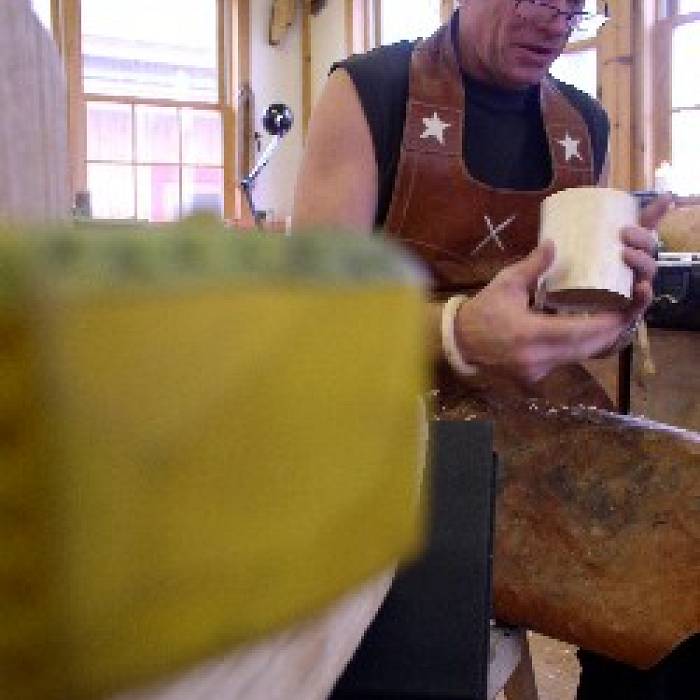
Course
Swedish Sloyd Traditions: Knife Making and Wood Carving with Jögge Sundqvist
Course Overview
From a traditional woodworker’s perspective, it is the sloyd knife, in both style and function, that best reflects the traditions of fine Scandinavian handwork. In the past, the knife was a very common tool throughout Scandinavia as nearly everyone had one for work or food preparation. As a result, knives were readily available for woodworking and the primary tool for shaping spoons, stools, furniture and other household items. Scandinavian knife makers quickly learned that tapered handles, oval in section, were excellent for carving. The thicker part of the handle fits well into the concave part of the carver’s hand, and gives the longer middle finger a good grip on the knife. The handle is narrow close to the blade, allowing clearance to carve close to the blank. The taper toward both ends of the handle lets you get a better grip with both your index finger and your little finger. The Scandinavian sloyd knife is a signature design for woodcarvers with its soft and pleasant lines. Acclaimed Swedish woodcarver, Jögge Sundqvist, will investigate these knifemaking traditions, as students learn to shape handles suitable for woodcarving. Working with freshly harvested birch wood and specialized drills, saws and rasps, students will split, shape and stylize their handles. In true sloyd fashion, each knife will be one of a kind, as students learn to carve and paint Swedish folk art motifs as surface decoration to personalize the handles. Materials chosen for the project will also closely reflect the northern forest as each student will learn to sew a sheath with birch bark and spruce root. The finest sloyd blades manufactured by Frosts of Mora Sweden, a region in Sweden that boasts a strong knifesmithing tradition dating back to the 17th century, will be provided for each knife made in class. During the second half of the class, students will learn a variety of different grasps in knifework, experimenting with engraved surface decoration and shallow relief carvings, one of Jögge's special skills. These skills are especially suitable for spoon and other complex carving, refining the work of the axe and drawknife for traditional woodworking projects. Jögge refers to these techniques as “the spectacular knife grasp” section, where “we just deeply learn the most difficult grasps slowly nerding us into the fibers.” Process thinking with spectacular outcomes.
